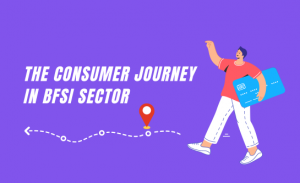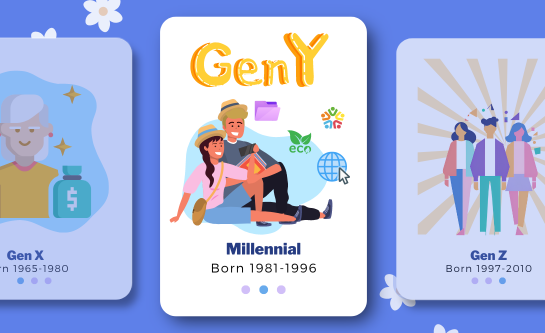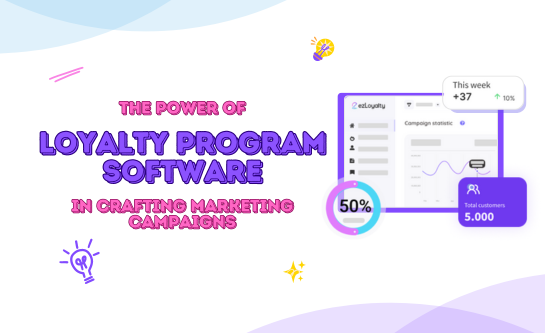The Consumer Decision-Making Process in the BFSI Sector
 Jun 06th, 2024
Jun 06th, 2024
 432 views
4 MINS READ
432 views
4 MINS READ
The Banking, Financial Services, and Insurance (BFSI) industry stands at the intersection of finance and consumer needs, where decision-making dynamics are vital in shaping market trends and business strategies. That is why understanding the complicated consumer behavior and decision-making process is critical for BFSI businesses to stay relevant and competitive. This article will point out key drivers in BFSI’s customer journeys and provide aligned strategies.
The consumer journey in the BFSI sector

Problem Recognition
The consumer decision-making journey often commences with the recognition of a need or problem. Within the BFSI realm, this initial phase could be triggered by various factors, ranging from life events such as marriage, childbirth, retirement, or significant financial milestones to external stimuli like marketing campaigns, economic trends, or regulatory changes. For instance, an individual may recognize the need for a new banking account to manage their finances efficiently or feel the urgency to secure insurance coverage following a major life event.
Information Search
Once a need or problem is identified, consumers search for information to gather relevant data to aid their decision-making process. In this era, consumers are surrounded by overwhelming information through various channels. For example search engines, social media, comparison websites, and peer recommendations. Within the BFSI landscape, consumers conduct extensive research to explore available options, understand product features, assess pricing structures, compare benefits, and evaluate the reputation and credibility of financial institutions.
Evaluation of Alternatives
Armed with a wealth of information, the consumer decision-making process in the BFSI sector involves evaluating alternative solutions or offerings that best align with consumers’ needs, preferences, and aspirations. In the BFSI sector, this entails comparing and contrasting various financial products and services, such as different types of banking accounts, insurance policies, investment vehicles, or retirement plans. Factors influencing this evaluative stage include product features, interest rates, fees, customer reviews, brand reputation, convenience of access, and the perceived level of trustworthiness associated with the financial institution.
Purchase Decision
Following a comprehensive evaluation process, consumers reach a pivotal juncture where they must make the ultimate purchase decision. Within the BFSI sector, this decision could manifest in different forms, including opening a bank account, applying for a credit card, purchasing an insurance policy, investing in mutual funds or stocks, or seeking financial advisory services. The purchase decision is influenced by various factors, including but not limited to promotional offers, incentives, discounts, loyalty programs, perceived value proposition, and the overall customer experience offered by the financial institution.
Post-Purchase Behavior
The culmination of the BFSI consumer decision-making process does not mark the end of the interaction between consumers and BFSI businesses. Rather, it initiates a continuous cycle of post-purchase behavior and engagement. In this phase, consumers assess their satisfaction levels and evaluate the efficacy of the chosen product or service. Positive post-purchase experiences often lead to enhanced customer loyalty, advocacy, and repeat business. Meanwhile, negative experiences can result in customer dissatisfaction, churn, and adverse word-of-mouth publicity. BFSI businesses must prioritize post-purchase engagement strategies, including proactive customer support, personalized communication, value-added services, and feedback solicitation to nurture enduring relationships with their clientele.
Key Strategies for BFSI Businesses
1. Personalization
BFSI firms should utilize advanced data analytics and machine learning algorithms to gain deep insights into consumer behaviors, preferences, transactional patterns, and the whole decision-making process. Hence, businesses can personalize product recommendations, messages, and services aligned to the unique needs and aspirations of different segments. For instance, firms can Implement personalized pricing strategies, rewards programs, and promotional offers to enhance customer engagement and loyalty.
2. Omnichannel Presence
With BFSI consumers’ complex journey, businesses must develop a seamless omnichannel ecosystem. It should include physical branches, digital platforms, mobile applications, social media channels, and interactive chatbots. This practice allows businesses to capture consumers at every touchpoint and provide a consistent experience for them throughout their journey.
3. Transparency
Businesses must address customers’ concerns related to data privacy, security protocols, and ethical practices to foster transparency. Furthermore, firms should empower consumers with useful knowledge and resources through educational workshops, seminars, and online tutorials. It will help consumers to make financial decisions and build a trusted brand image. Lastly, BFSI firms can foster transparent and accountable cultures through concise information about product features, fees, and regulatory compliance. With the mentioned strategies, you can easily win the customers’ hearts in the BFSI sector.
4. Customer Feedback
Businesses should establish robust mechanisms for collecting, analyzing, and acting upon customer feedback across all stages of the consumer journey. Firms can collect feedback through surveys, focus groups, online reviews, and social media engagement.
By doing this, BFSI firms can gain valuable insights into their preferences, pain points, and expectations. Therefore, you could utilize this customer feedback as a strategic tool for continuous improvement, innovation, and service excellence.
Wraps up
Mastering the art of analyzing the consumer decision-making process is indispensable for BFSI businesses. By understanding the consumer journey, businesses can craft tailored strategies to attract, engage, and retain customers effectively. Furthermore, BFSI firms can reinforce relationships with clientele and drive sustainable growth by embracing personalization, omnichannel presence, and more.
 Back to blog page
Back to blog page













































